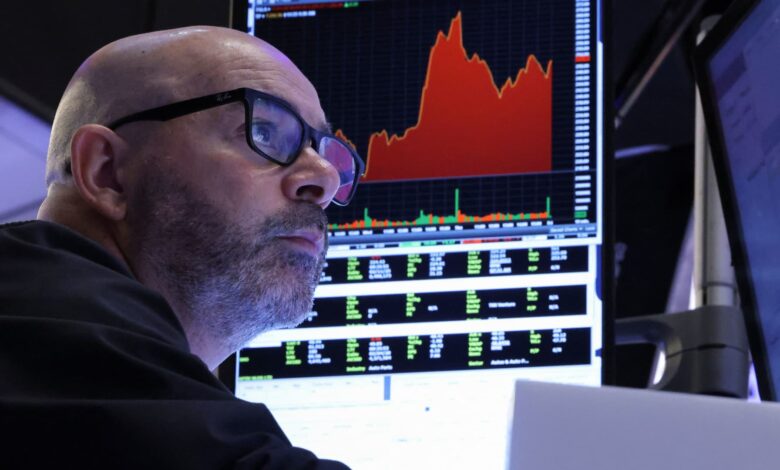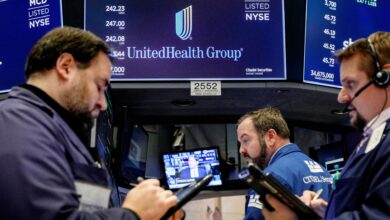Zero-day options are fueling the unprecedented volatility on Wall Street amid tariff chaos

A trader works on the floor at the New York Stock Exchange (NYSE) in New York City, U.S., April 11, 2025.
Brendan Mcdermid | Reuters
Wild intraday gyrations in stocks since “liberation day” have put investors more on edge than ever, and the popularity of zero-day-to-expiration options is partly to blame.
Zero-day-to-expiration options are contracts that expire the same day that they’re traded. The trading volume of 0DTE options tied to the S&P 500 surged to 8.5 million in April, a 23% jump since the beginning of the year and accounting for roughly 7% of the total volume in U.S. option markets, according to data from JPMorgan.
These securities have become a popular tool for investors, big and small, to make a quick buck or hedge against sudden event-driven moves in the broader market. Many contend that large volumes of these short-lived vehicles can exacerbate price swings in the market as dealers and market makers buy and sell underlying assets to balance their positions.
“You’re seeing the zero data options market amplify and exaggerate almost up or down. If you go back 10, 20 years, you didn’t have these catalysts,” said Jeff Kilburg, CEO and CIO of KKM Financial. “It’s almost like gasoline on a fire when you see a move being exaggerated by the underlying options move.”
S&P 500
Volatility surged as Trump introduced steep tariffs on key U.S. trading partners and repeatedly reversed and changed his own policy. On Wednesday, the S&P 500 posted its third-biggest gain in post-World War II history, following a four-day rout that briefly pushed it into bear market territory. Last week also saw the Dow Jones Industrial Average fall at least 1,500 points on back-to-back days, the first time in history.
The S&P 500’s intraday volatility almost doubled last week to 44%, exceeding the 2020 highs and is now reaching levels last seen during the depth of the 2008 financial crisis, according to data from Cboe Global Markets. This extreme uncertainty fueled the demand for 0DTEs as investors look to hedge risk and take advantage of the volatility.
“We find that 0DTE (+1DTE) have been instrumental in driving more intraday volatility, with this higher intraday activity not necessarily getting captured on a close-to-close basis,” Maxwell Grinacoff, UBS’ head of U.S. equity derivatives research, said in a note.
These options are also made more accessible for retail investors using online broker Robinhood. An option is a contract that gives its owner the right, but not the obligation, to buy or sell a specific amount of an underlying asset at an agreed-upon price, known as the strike price, and on a specific date.
“Options have been an institutional tool for decades now, and the sophistication of retail investors is allowing more and more people to utilize options to hedge or to simply speculate,” Kilburg said.
Get Your Ticket to Pro LIVE
Join us at the New York Stock Exchange!
Uncertain markets? Gain an edge with CNBC Pro LIVE, an exclusive, inaugural event at the historic New York Stock Exchange.
In today’s dynamic financial landscape, access to expert insights is paramount. As a CNBC Pro subscriber, we invite you to join us for our first exclusive, in-person CNBC Pro LIVE event at the iconic NYSE on Thursday, June 12.
Join interactive Pro clinics led by our Pros Carter Worth, Dan Niles and Dan Ives, with a special edition of Pro Talks with Tom Lee. You’ll also get the opportunity to network with CNBC experts, talent and other Pro subscribers during an exciting cocktail hour on the legendary trading floor. Tickets are limited!




